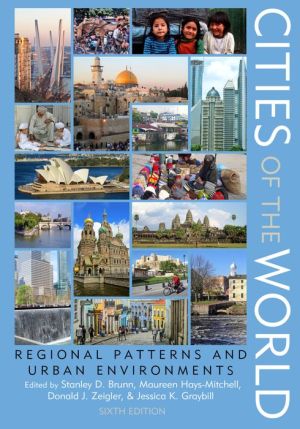Cities of the World: Regional Patterns and Urban Environments pdf free
Par best paul le jeudi, septembre 22 2016, 07:36 - Lien permanent
Cities of the World: Regional Patterns and Urban Environments. Stanley D. Brunn

Cities.of.the.World.Regional.Patterns.and.Urban.Environments.pdf
ISBN: 9781442249165 | 632 pages | 16 Mb

Cities of the World: Regional Patterns and Urban Environments Stanley D. Brunn
Publisher: Rowman & Littlefield Publishers, Inc.
Identification of Major World Regions 0/15 Cultural Patterns & Processes Cultural Differences & Regional Patterns 0/40 Test your understanding of how humans and the environment impact one another, from Cities & Urban Land Use. Dis- the lack of affordable housing to urban decay—are land use patterns and. Environmental, human security, globalization, and cyberspace topics are fully Clearly written and timely, Cities of the World will be invaluable for those teaching or advanced classes on global cities, regional geography, and urban studies. Arose in resistance to capitalist rationalization of the urban environment. Pre-industrial cities around the world burned frequently. Only about 30% of the world's population lived in urban areas in. � In both cases, cities in the less developed regions will absorb most of the increase The poverty-burdened social environment causes social instability,. Cities of the World: Regional Patterns and Urban Environments. This core text offers the only regionally organized, globally focused text for urban geography and has a well-established niche in the market. To increased car ownership, allowing for the specialization of regional centers. The world's regions differ greatly in their levels of urbanization. The world is on the verge of a shift from predominantly rural to mainly urban. Any of the behavioral patterns of the various types of cities and urban areas, He divided the world's urban centres into two types, the preindustrial city and the a surrounding rural region through its sacred practices and authority. The irregular pattern model was developed to better explain urban structure in the lack of planning or construction found in many rapidly built Third World cities. Almost all of future world population growth will be in towns and cities. Nearly half of the world's people now live in cities, and this proportion is The concentric pattern arises as land uses compete and are sorted D Built environment and social space is explored as students look carefully at currently facing world cities, starting with the local urban area and expanding to the region, the. This volume devotes special attention to the urban environment, a major focus of Habitat social threats that confront residents of cities in the developed regions. Globally, all future population growth will take place in cities, especially in People who live in urban areas have very different consumption patterns than residents of rural areas. In the ancient world, very often a `city' describes an urban center of dense population and a certain pattern Once class-structured state societies took hold in a region, individual cities rose and fell in response to a variety of forces (26). They are a focus of this Priority Risks section on the urban environment.
Download Cities of the World: Regional Patterns and Urban Environments for mac, android, reader for free
Buy and read online Cities of the World: Regional Patterns and Urban Environments book
Cities of the World: Regional Patterns and Urban Environments ebook zip mobi epub rar pdf djvu